Research
- Groundwater/Surface Interactions
- Residence Times in Watersheds
- Interbasin Groundwater Flow
- Hydrogeology of Desert Springs
- Interactions in Agricultural Watersheds
Groundwater/Surface Interactions
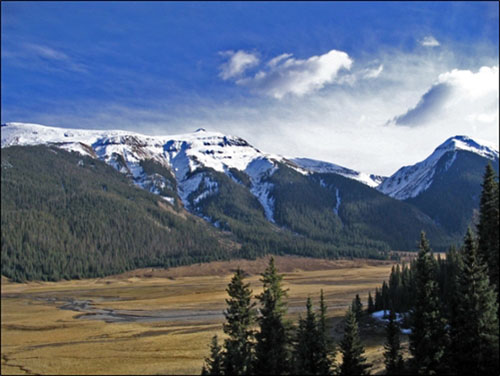
In general, the role of deep circulating groundwater in watersheds remains poorly quantified. Recent research has shown that deep groundwater may be a critical and in some cases dominant source of water for streams and springs in mountainous watersheds. This has important implications for the hydrological response of mountainous watersheds to the effects of perturbations such as climate change, and land-use and land-cover change since mountains are the primary source of groundwater recharge in these regions. In this research, we address the following questions: How will perennial streamflow and springflow be impacted in a drying climate? What impact does large-scale landscape and forest disturbance have on perennial streamflow and springflow? How do these perturbations propagate through the mountain bedrock aquifers?
Residence Times in Watersheds
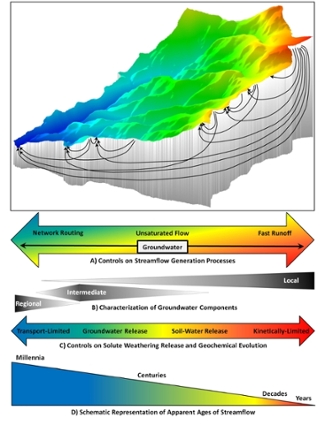
The common perception is that residence times of water in watersheds are short (i.e., the water is young). This is not always true, and attempts to broadly classify water as young may contain considerable error. Recent research has shown that deep groundwater contributions to streams and springs can substantially change the residence time distribution (RTD) of those water bodies. This has important implications for our evolving conceptual models of how watersheds work. In this research, we address the following questions: How deep is deep groundwater and how do residence times change with depth of circulation in different geologic settings? How do residence times affect geochemical kinetics and solute release in the deep aquifers? How do these processes change with scale, with geology, with climatology?
Frisbee et al. (2012)
Interbasin Groundwater Flow
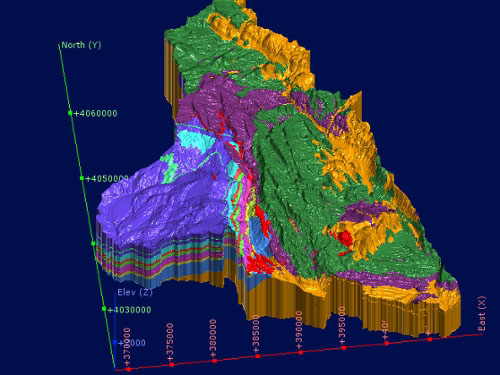
In general, groundwater/surface-water interactions are often hidden from direct observation. We must quantify them using environmental tracers, geochemical tracers, and/or heat as tracer. Interbasin groundwater flow (flow between basins or watersheds) poses additional challenges. It is difficult to determine when and where interbasin groundwater flow occurs, and the magnitude of those exchanges. In addition, recent research indicates that interbasin groundwater flow may play a significant role in landscape evolution where it occurs. In this research, we address the following questions: What aquifer properties are required for interbasin groundwater flow to occur? What role does it play in the watershed response to perturbations? What role does it play in landscape evolution?
Hydrogeology of Desert Springs
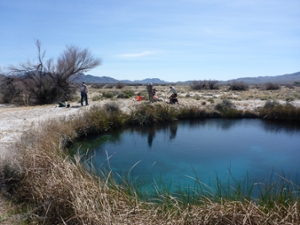
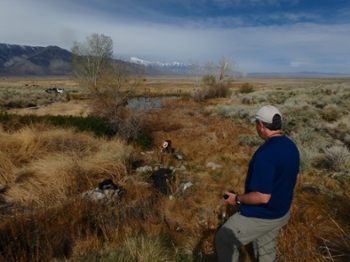
Desert springs are commonly the only sources of surface water in semi-arid and arid environments. These springs were vital for the early exploration of the southwestern USA and remain important today as sources of water for households, agricultural irrigation, and livestock and wildlife tanks. In addition, obligate spring-dwelling (crenobiotic) species of fish, snails, and salamanders depend on these small perennial sources of water; many of these species can only be found in one spring. These springs also provide information on how groundwater systems have responded and adjusted to tectonic forces over long time-scales (1 Ma) and to climate fluctuations over shorter time-scales (10 ka). In this research, we address the following questions: What hydrological, geochemical, residence times metrics can be used to infer spring resilience? Why have some springs desiccated in the past leaving paleospring deposits? Why have other springs persisted?
Interactions in Agricultural Watersheds
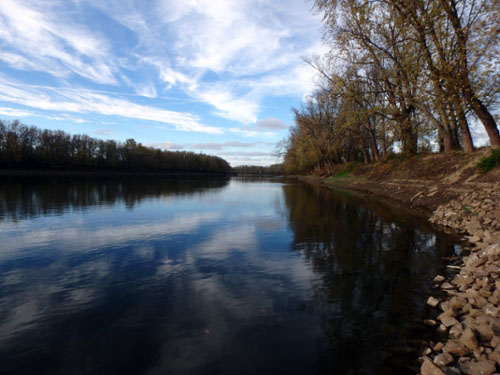
The hydrological functioning of agricultural watersheds have been so extensively modified by drainage activities that there may be little, if any, groundwater discharge to the streams draining these watersheds. This has important implications to nutrient legacies, ecological functioning, and basin-wide water quality. In this research, we address the following questions: What is the source of baseflow in agricultural watersheds? If groundwater is detected, then what is the magnitude and spatial variability of the groundwater discharge to the streams?